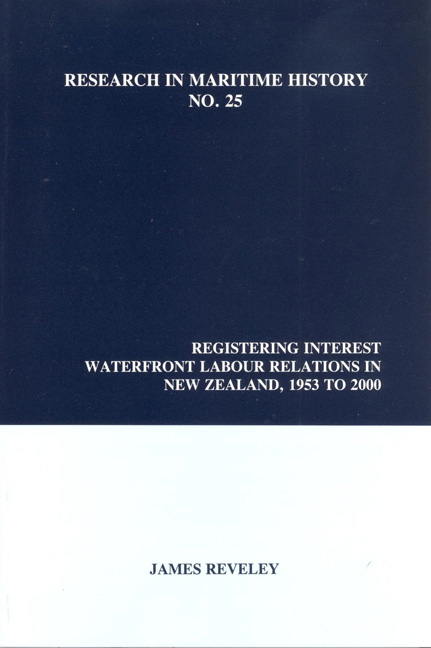Book contents
- Frontmatter
- Contents
- About the Author
- List of Figures
- List of Tables
- Acknowledgments
- Introduction
- Chapter 1 Unions and the Bureau System
- Chapter 2 The Waterfront Employers: Companies and Coordination Mechanisms
- Chapter 3 Labour Relations in the Conventional Cargo Era
- Chapter 4 Negotiating Technological Change
- Chapter 5 Labour Relations after Containerisation
- Chapter 6 Waterfront Labour Reform
- Conclusion
Chapter 6 - Waterfront Labour Reform
- Frontmatter
- Contents
- About the Author
- List of Figures
- List of Tables
- Acknowledgments
- Introduction
- Chapter 1 Unions and the Bureau System
- Chapter 2 The Waterfront Employers: Companies and Coordination Mechanisms
- Chapter 3 Labour Relations in the Conventional Cargo Era
- Chapter 4 Negotiating Technological Change
- Chapter 5 Labour Relations after Containerisation
- Chapter 6 Waterfront Labour Reform
- Conclusion
Summary
In the late 1960s the Port Employers Association (PEA) tried to replace the bureau system with direct employment of watersiders by companies that carried out stevedoring. The waterfront employers were not alone in their dissatisfaction with the existing arrangement. As early as 1971, the Exports and Shipping Council - the peak body formed in 1964 to represent shippers - called for the abolition of the Waterfront Industry Commission (WIC). Although their call went unanswered, endogenous pressures for reform mounted after containerisation. Due largely to the way that the bureau system empowered unions and weakened employers, in the early 1980s the stevedoring industry was characterised by stagnant labour productivity, rising costs, a lack of labour flexibility, overstaffing and restrictive practices. Shippers mobilised in response to this situation, with the Bulk and Homogeneous Shippers Association gaining representation on the New Zealand Association of Waterfront Employers (NZAWE) Council in 1983. Attempts by the NZAWE to restructure comprehensively watersiders’ terms and conditions of employment in the mid-1980s ultimately failed, as time and again the Waterside Workers Federation (WWF) used its industrial power to close the country's ports. In 1985 alone, 88,024 person-hours were lost through such action. In this context, waterfront employers and shippers, conscious of a major policy shift within government, again called for the abolition of the bureau system. This time these industry stakeholders were to receive a sympathetic ear from ministers within the fourth Labour government. This chapter documents the labour relations outcomes of the process of waterfront reform initially set in motion by Labour and continued by successive governments that transformed the legal framework within which unions and employers interacted.
The Reform Process
There was jubilation by many in the labour movement in 1984 when a Labour government entered office for only the fourth time in the twentieth century. WWF President Bruce Malcolm, for one, was almost messianic in tone when he spoke of this development at the Federation's Conference:
This, the Ninth Biennial Conference, is blessed with being held with a workers’ government, the Labour Party, being in power…The workers’ government of New Zealand, the Labour Party, one would surmise will not, during the period from 1984 through to 1987 fall into the bottomless pit, or attain the aloofness of the third Labour Government.
- Type
- Chapter
- Information
- Registering InterestWaterfront Labour Relations In New Zealand, 1953 To 2000, pp. 139 - 164Publisher: Liverpool University PressPrint publication year: 2003



